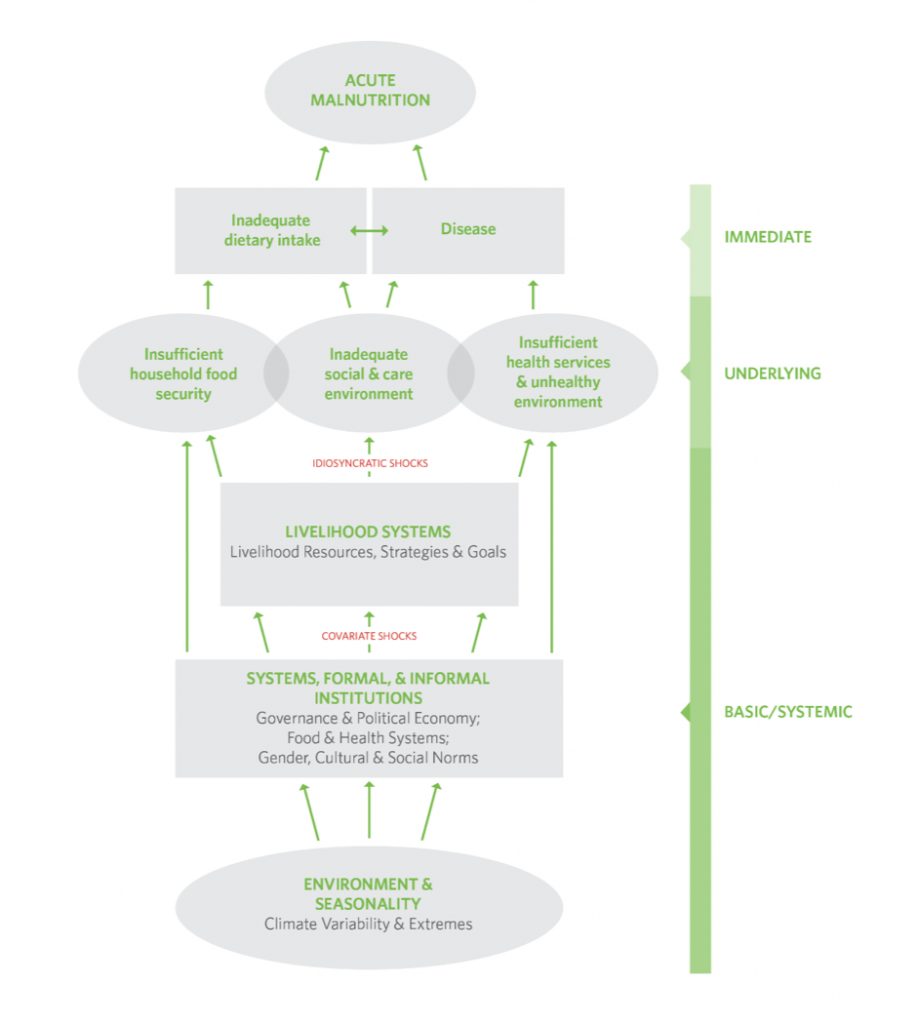Adapted Framework
In Nutrition in Africa’s drylands, Helen Young proposes an adapted framework for addressing acute malnutrition in Africa’s drylands. This framework preserves the immediate and underlying causes that are articulated in the generally accepted framework and reconceptualizes the basic more systemic drivers of acute malnutrition to include three interlinked areas:
- Environment and Seasonality reflects the unique conditions of drylands, which are characterized by environmental variability, seasonality and climate extremes. Rainfall occurs in one or sometimes two rainy seasons. The pattern of rainfall within each rainy season varies significantly, which means that environmental resources (vegetation, pasture, water, forest, etc.) change throughout the year and within seasons their distribution is unpredictable. While drylands have been frequently exposed to droughts and floods for many decades, people are now facing new climate challenges related to increasing temperatures associated with climate change. Climate shocks do not cause disasters on their own, but they can trigger disasters when systems and institutions are not designed to cope appropriately.
- Systems and institutions determine how things work. Systems include, governance and economic systems, food systems, public health systems, and livelihood systems. Institutions are embedded within systems and reflect agreed ways of working or living together and may be formal or informal. Formal institutions include policies and formal rules and regulations, such as regulations governing the quality of the food supply. Informal institutions reflect widespread and persistent patterns of behavior and practices that are structured by the norms of society, such as gender norms. All of these types of systems and institutions affect nutrition so in order to shift their influence for the good, we must first understand how they work.
- Livelihood systems provide the wherewithal for good nutrition. Dryland livelihood systems are adapted to the environmental variability described above. Despite this inherent adaptability, worsening conditions and poor governance have undermined the resilience of dryland livelihood systems and led to coping responses that have slowly transformed livelihoods, often with negative consequences for nutrition. Many coping responses increase women’s vulnerability, by increasing their workload and exposing them to risks, while also reducing their time and resources for childcare.
Understanding the basic drivers and how they are interlinked with each other and influence the underlying causes of malnutrition is critical for planning how best to sustainably address acute malnutrition. This technical series will review each of the three basic drivers presented in this adapted framework and then discuss next steps. We invite you to provide feedback on the framework through the link on the Get Involved page.
